Easy Pie Crust Recipe Without a Food Processor
This easy pie crust recipe is made by hand, without a food processor. It’s super flaky, light, and buttery and makes enough for a double-crust pie.
A good pie recipe needs a good pie crust. One that is flavorful, light, and flaky yet substantial enough to hold the pie filling. This all-butter crust makes the perfect pie crust for both sweet and savory pies.

It’s made easily without a food processor. Use it in old-fashioned lemon pie, pecan pie, coconut cream pie, blueberry pie, and more!
Flaky pie crust
The flaky layers in a pie crust are made using cold fat that is cut into flour and bound together with a cold liquid to create a thick pastry dough. When the pastry is baked, the water in the fat evaporates and creates little pockets of air throughout the pastry.
This homemade pie crust recipe is using pure butter as the fat component. It makes a very tender crust with an excellent flavor.
The ingredients
A pie crust is a simple recipe so you only need simple ingredients to make this wonderfully flaky pastry.
- Butter. You can use salted butter or unsalted butter. If using salted butter, the added salt component in the recipe can be slightly adjusted.
- Flour. All-purpose flour or pastry flour.
- Salt
- Sugar – Optional but together with the salt it enhances the crust flavor
- Lemon juice or vinegar (white vinegar or apple cider vinegar)
- Ice cold water
Pictured below is my pecan pie without corn syrup

How to keep pie crust from shrinking
To make a great pie crust, you must avoid too much gluten development in the dough. Gluten is developed in the dough when glutenous flour types are mixed with water. Glutenous flours are those that contain two proteins called glutenin and gliadin.
As they react with water they form strong bonds with each other which allow for an elastic dough. For bread dough this is a great thing, but not for flaky and tender pastry.
For pastry dough you want to limit this gluten development as much as possible, otherwise, you’ll have a chewy pastry, and one that shrinks in the oven. There are a few things to do in order to keep a tender pastry.
Top tips
- Use an all-purpose flour with a low level of protein of 10% or a pastry flour which usually has around 8-9% protein.
- Work the dough as little as possible. Kneading dough also encourages gluten development. In this recipe, the dough is rolled into layers instead of kneading.
- Don’t over hydrate the pastry by adding too much water. The gluten is developed when water reacts with the protein in the flour. Ensure you don’t add too much. The pastry dough should have just enough water so that it holds together easily when pressed but it shouldn’t be sticky.
- In the same regard, if you add too little water the dough will be crumbly and you won’t be able to roll it out without it breaking.
- Add some acid to the dough. An acid like lemon juice or vinegar helps to break down the gluten bonds that are developed. Discard sourdough starter can also be added to bring in some acid.
- Let the dough rest. Once the pastry is mixed, let it rest in the refrigerator so the gluten can relax. This is going to help with rolling the pie crust and avoid shrinking in the oven.
- Some recipes use cold vodka in place of some of the chilled water in the pastry. This is a good idea as vodka doesn’t encourage gluten development the way that water does. This means you can still add liquid to the dough in order to form a dough but it’s not going to make it tough. You can substitute half the ice-cold water for cold vodka. As the pie bakes all the alcohol will be evaporated from the dough.
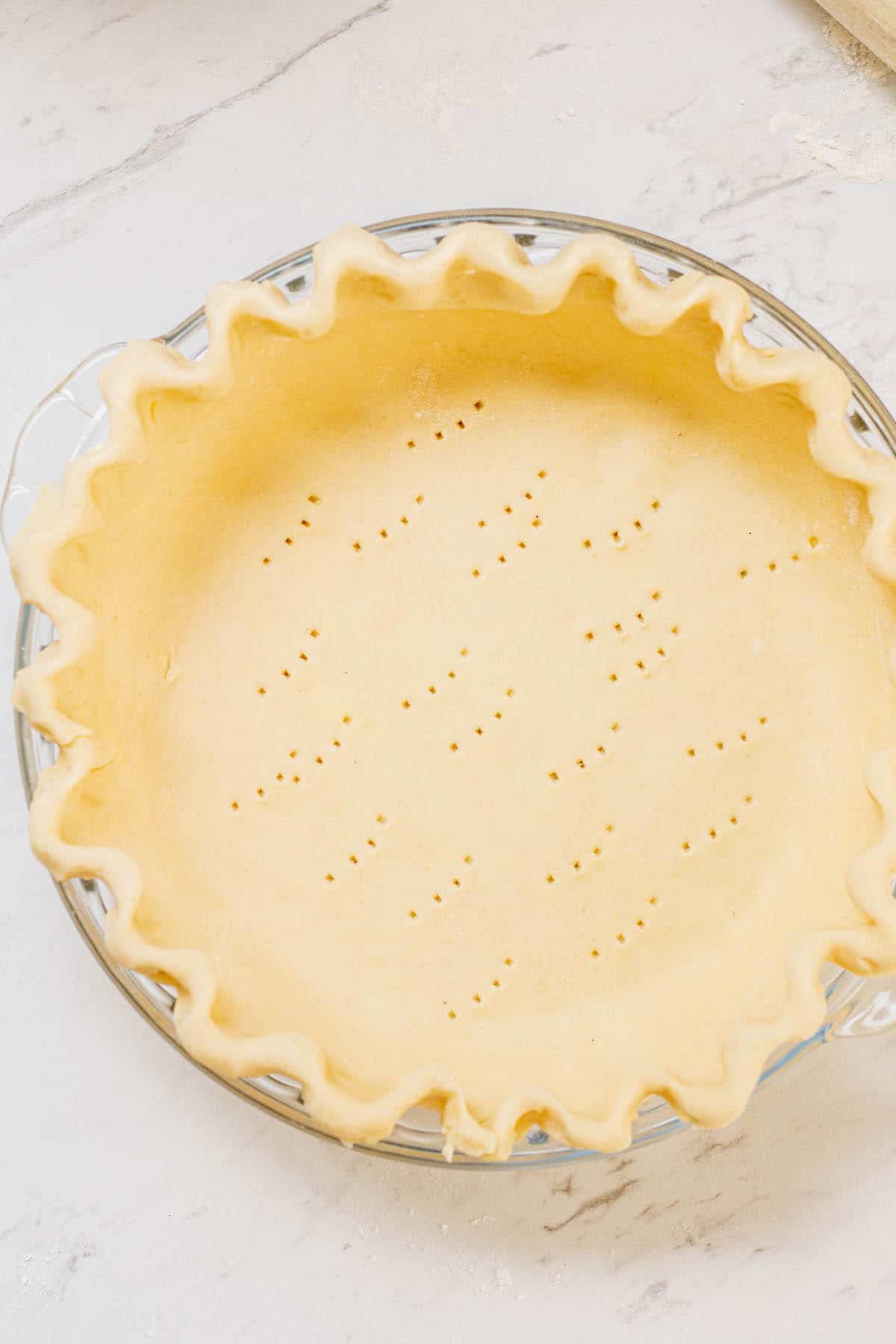
How to get a flaky pie crust
The flakiness in this easy recipe comes from the fat in the recipe.
Cold chunks of butter are cut or rubbed into the dough until it’s broken into coarse breadcrumb pieces with a few butter pieces the size of peas in there too.
When the pastry hits the oven the water in the butter evaporates and it creates air pockets in the pastry. There are a few things to do in order to achieve the perfect flaky crust.
Top tips
- Keep the butter cold at all times. Adding ice cubes to the water used in the dough will help with this. If the butter melts into the dough you won’t get that reaction of the water evaporating in the oven and it’s not going to be flaky. The pastry is easiest to make on a cool day for this reason. If your room temperature is warm, you will need to place your pastry into the freezer or fridge each time you feel the cold butter warming up and softening.
- If you are in a very warm environment you may want to swap half the butter for shortening. Butter makes a flakier crust with more flavor but shortening is easier to work with as it has a higher melting point than butter.
- Bring the dough together with just enough water without working it too much. Once it makes a cohesive dough, roll it out into a small rectangle, then fold the dough into layers like a pamphlet. Repeat. This process is similar to lamination in inverted puff pastry and makes a flakier crust. It will make it smoother without developing the gluten as much as kneading.
- Rest the dough once this is done, for at least 2 hours. It can also be frozen for future use.
- Bake the pie crust properly. Underbaked pie crust will be soft, not flaky.

Step-by-step instructions
Begin by chopping the butter into cubes. Add the cubes to a bowl and place them in the fridge or freezer for 10 minutes to ensure it’s cold.

To a large mixing bowl add the flour, salt, and sugar and mix. Add the cold butter cubes to the flour.
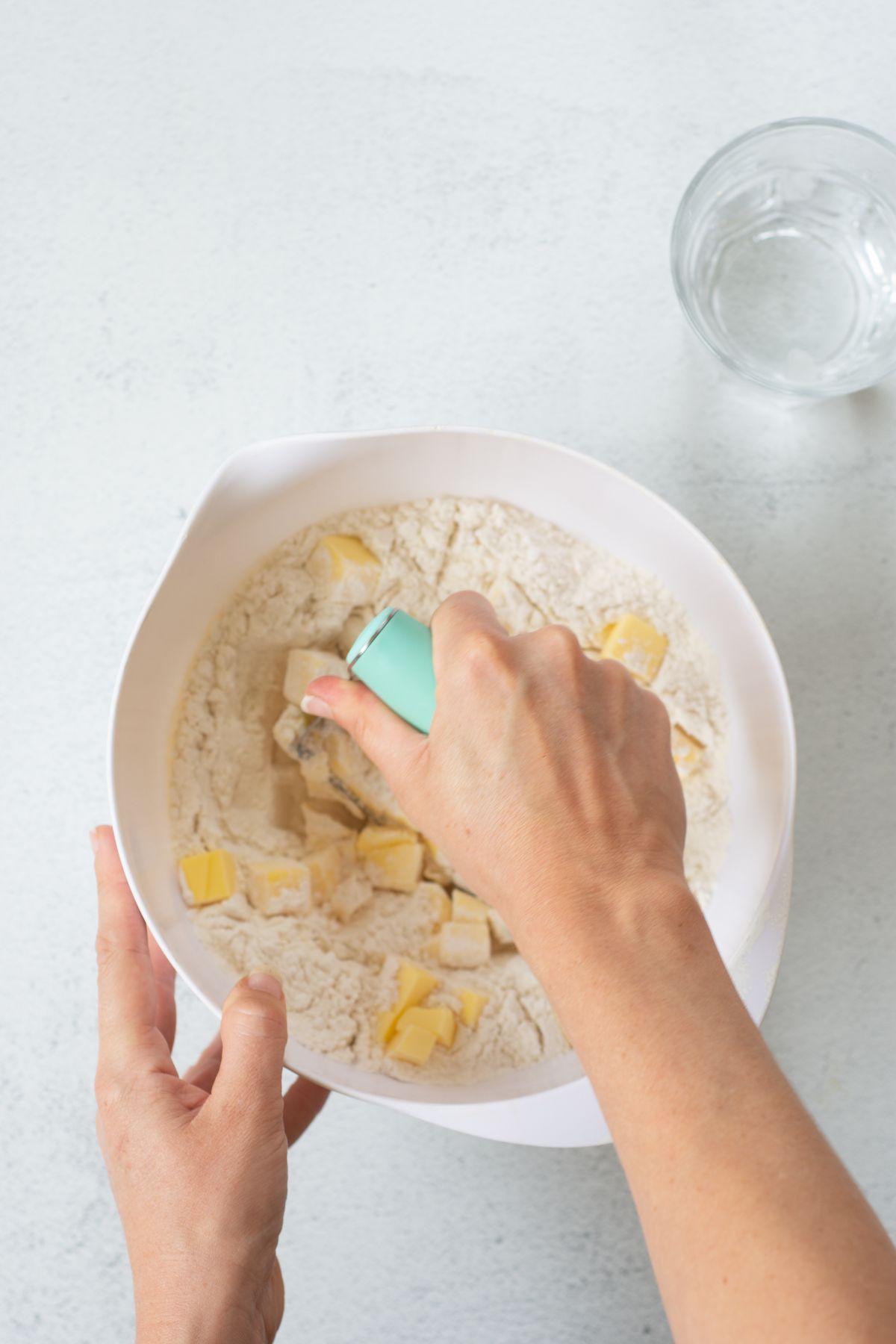
Use a pastry cutter to cut the butter into small pieces into the flour, or use your fingertips to rub the butter into the flour.

The end result should be like coarse bread crumbs with a few pea-sized butter pieces in the mix. If the butter is melting at any point, place the bowl in the refrigerator.
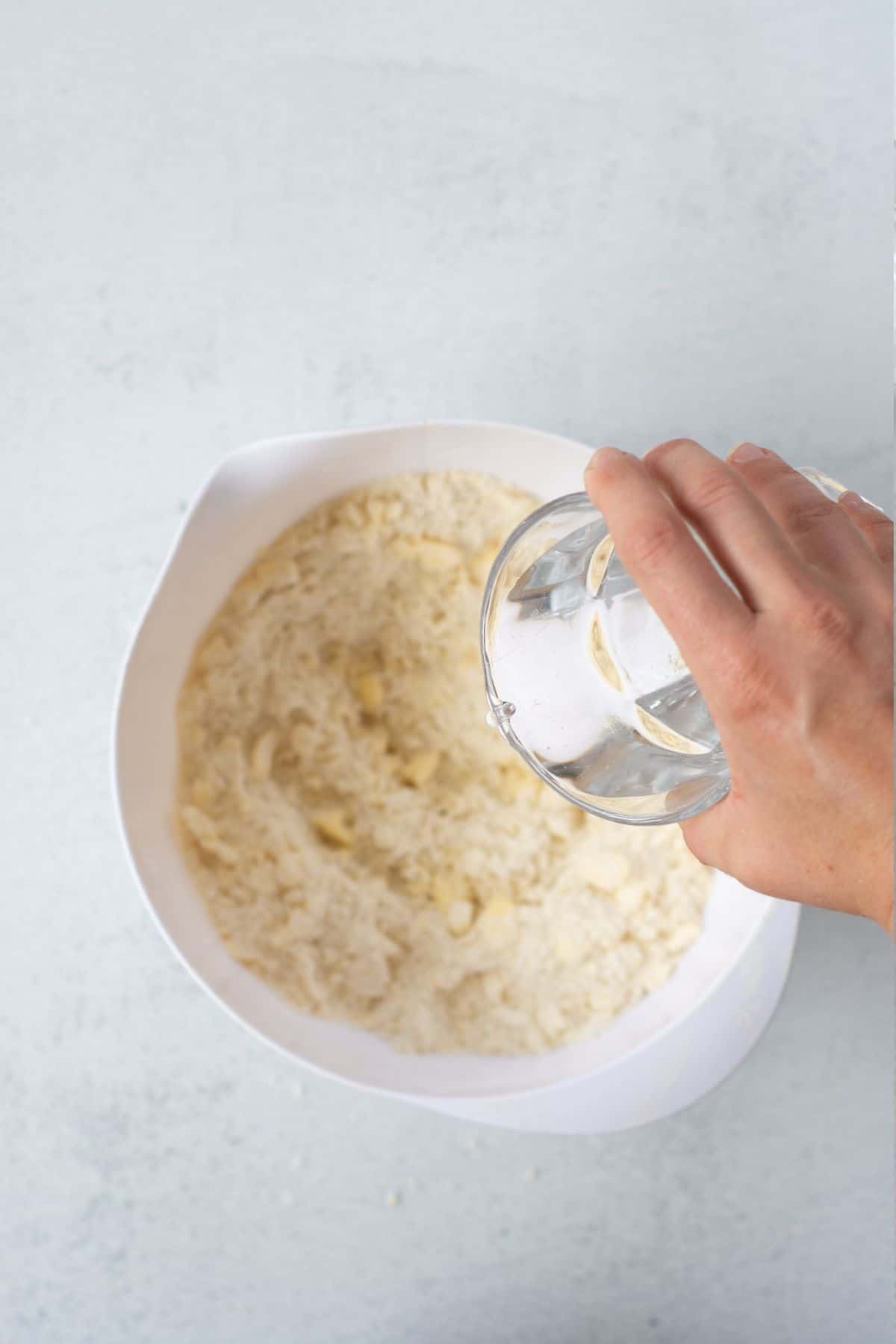
Add the lemon juice to the iced water and drizzle it into the mixture slowly, about a tablespoon worth at a time.
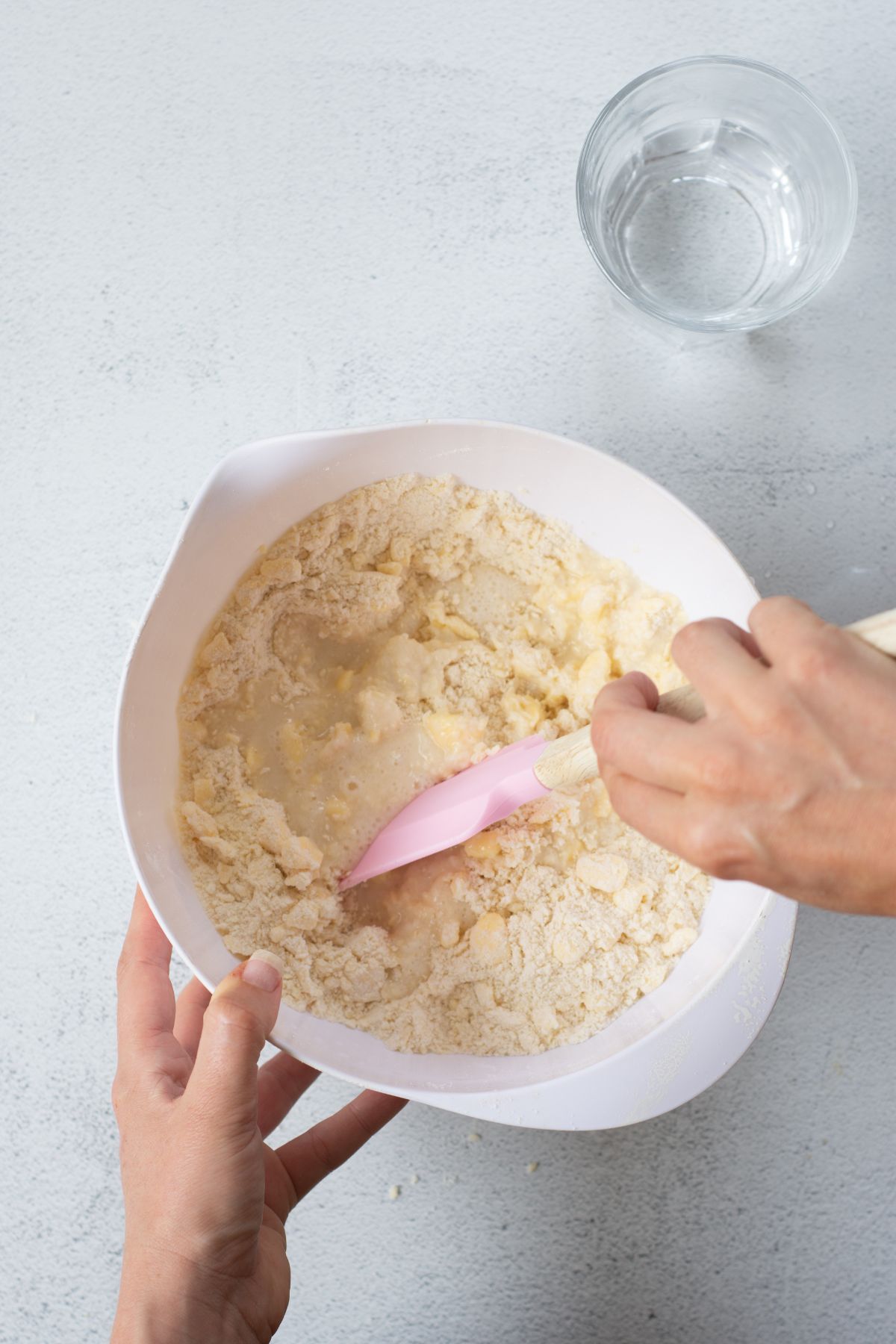
Use a spatula or your hands to combine the dough and add in as much chilled water as needed.

It should hold together easily when pressed but not be sticky. If the dough is crumbly, add a bit more water.

If the butter has softened or the dough is warm, place it in the fridge for 30 minutes before continuing with the next step.
Rolling the dough
On a lightly floured work surface, using a rolling pin, roll the dough into a rough 10-inch/25cm rectangle. There’s no need to measure it perfectly, just lengthen it to around 10 inches.
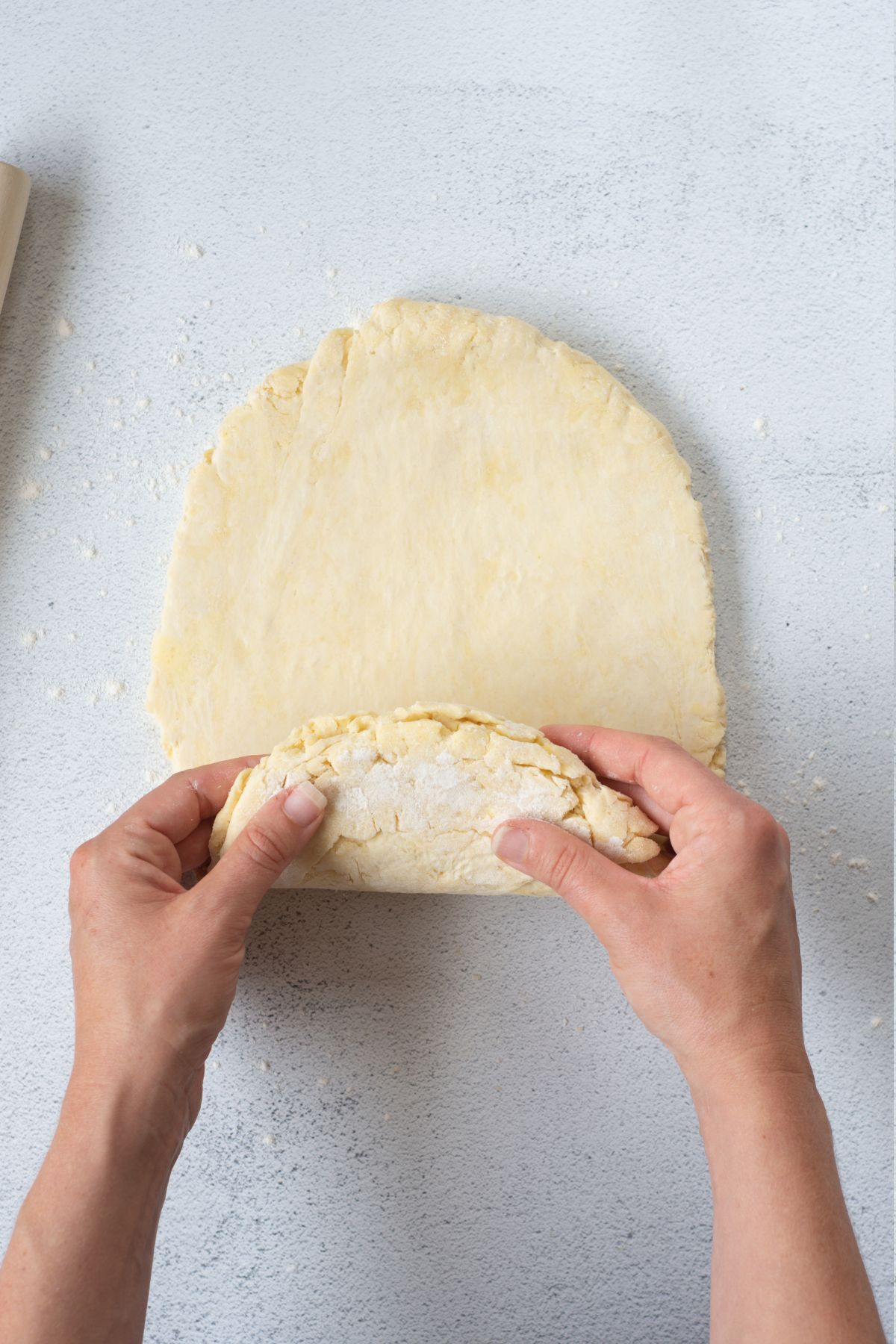
Fold the bottom 1/3 of the dough up to the middle, then fold the top 1/3 of the dough over top to make a pamphlet shape.

Turn the dough a quarter turn and repeat this roll and fold process once more.
Once finished rolling, cut the dough into two and use your cupped hands to gently shape each piece into a flat disc.
Wrap the dough discs up tightly using compostable plastic wrap, or beeswax wrap, or place them in a fitted airtight container. Chill it in the fridge for at least 2 hours or up to 2 days before using it. Alternatively, it can be frozen for up to three months.
Rolling a pie crust
The dough makes enough for a double 9-inch pie crust.
For a double-crust pie, roll one piece of the dough into a 12-inch/30cm circle on a lightly floured surface using a rolling pin. Keep the second piece of dough in the fridge until you need it.
Lightly dust the top of the dough with flour, then gently roll it up the rolling pin like a spiral. Transfer it to a pie dish and carefully unroll it from the rolling pin until it’s draped over the pie dish and overhangs the sides of the dish.
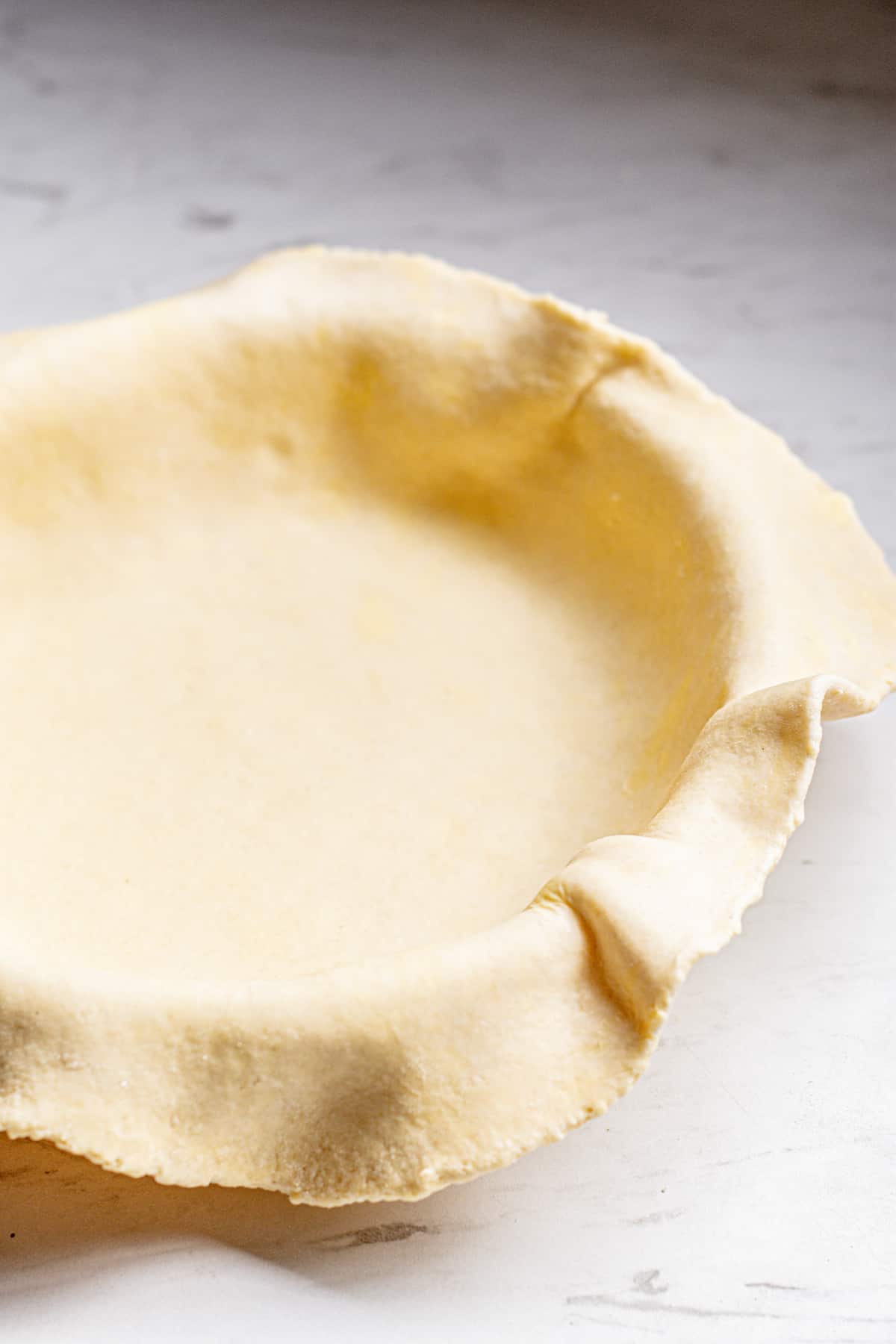
If your circle is uneven, cut off any excess dough around the pie dish to make it even, but leave around a 1/2 an inch of overhang.
Roll the overhanging dough under the edge to make a thick border. This is going to help when you flute the dough (basically give it a pretty crimped edge).
Fluting pie dough
To flute, push an index finger from one hand into the dough edge in between the thumb and index finger of the opposite hand. Continue this all around the dough edges.
Alternatively, use a fork to create rustic fork lines around the edges instead. The second piece of dough can be rolled out to create the top of the pie if it’s a double-crust recipe.
Pictured below is spiced caramel apple pie.

Baking a pie crust
The baking of the pie crust is where all the magic happens. A delicious crust is crispy and flaky. The oven needs to be hot so that the water evaporates fast without the fat in the dough just melting.
The pastry should be baked thoroughly so it’s a deep golden brown and crispy. Under-baked pie crust is soft, pale, and soggy. It doesn’t matter how well you make the actual pastry. If it’s not baked well you will be disappointed.

Blind baking
Some pie recipes will require the pie crust to be baked fully or partially before filling.
When baking the crust on its own, it needs to be blind-baked first. Blind baking is a process where the unbaked pie case is covered with parchment paper and pie weights to hold down the bottom of the pie.
This stops the bottom crust from puffing up in the oven as the water in the fat evaporates. For pies that don’t require this pre-baking step, it’s the filling that will hold down the bottom crust.
How to partially blind bake a crust

To blind-bake, prick the bottom of the pie crust all over with a fork.
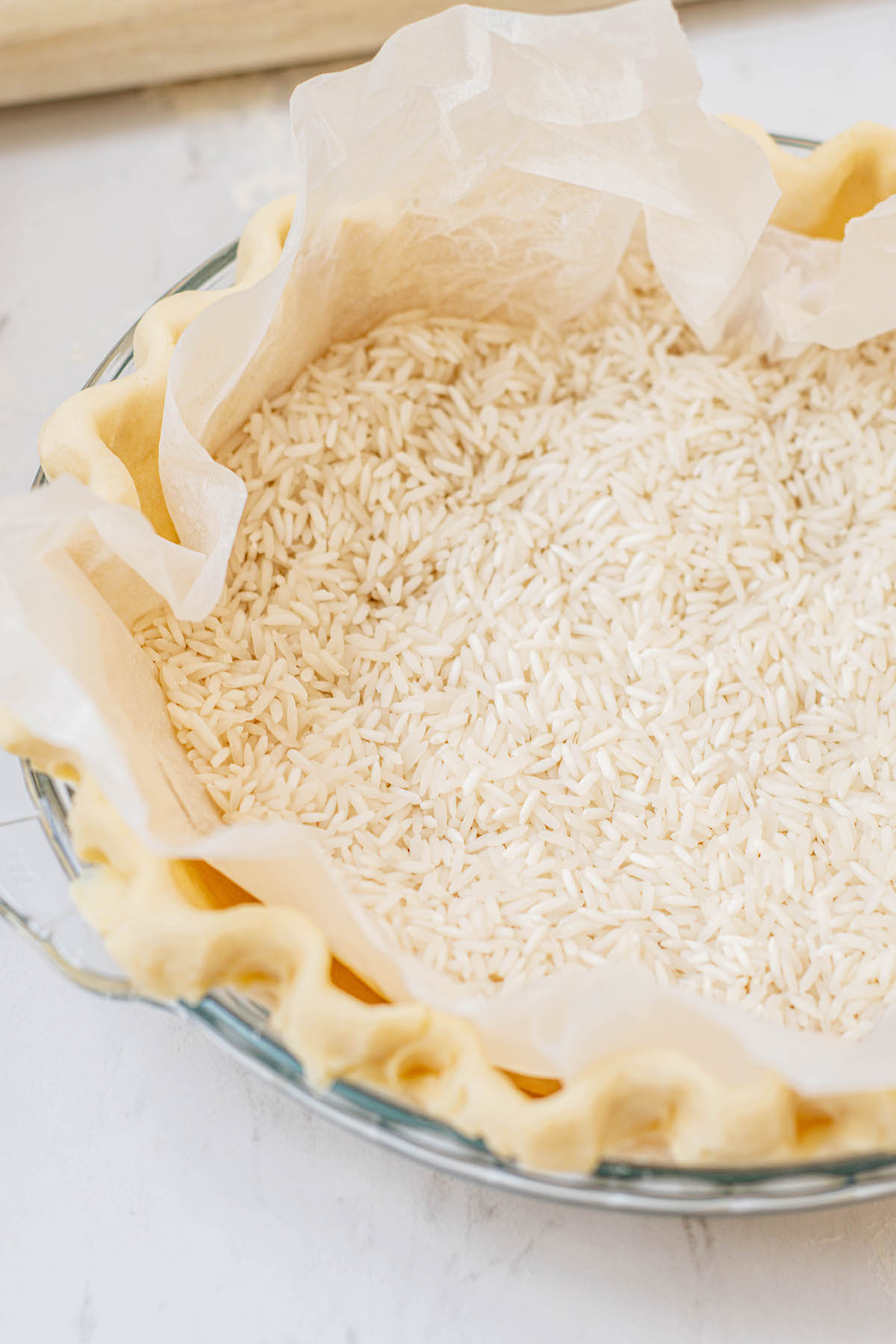
Line the crust with parchment paper and fill it with pie weights.
Bake it at 425°F/220°C for around 10-15 minutes until the edges of the pie crust are lightly browned.
Remove it from the oven and lift off the parchment paper and weights. Place the crust back in the oven for another 2-3 minutes until the bottom stops looking wet.
This is a partially baked crust, and you can use this method to ensure an extra-crisp crust for single-crust pie recipes where the filling needs cooking.
Fill the partially baked crust with your filling and place it back in the oven. Because the edges are already par-baked, tenting the outer edge of the pie with aluminum foil will stop the edges from burning when it goes back in the oven.
For pies where the filling does not need baking, like lemon meringue, you’ll need to fully bake the pie crust.
Fully baking a pie crust
To fully bake a pie crust, blind-bake it as described above, and remove the pie weights and parchment paper. Lower the oven temperature to 400°F (200°C) and place the pie crust back in the oven for 15-20 minutes until it’s nicely golden brown and crisp looking.
You want to see some good color on the crust. A pale crust means it’s undercooked and it won’t be flaky.
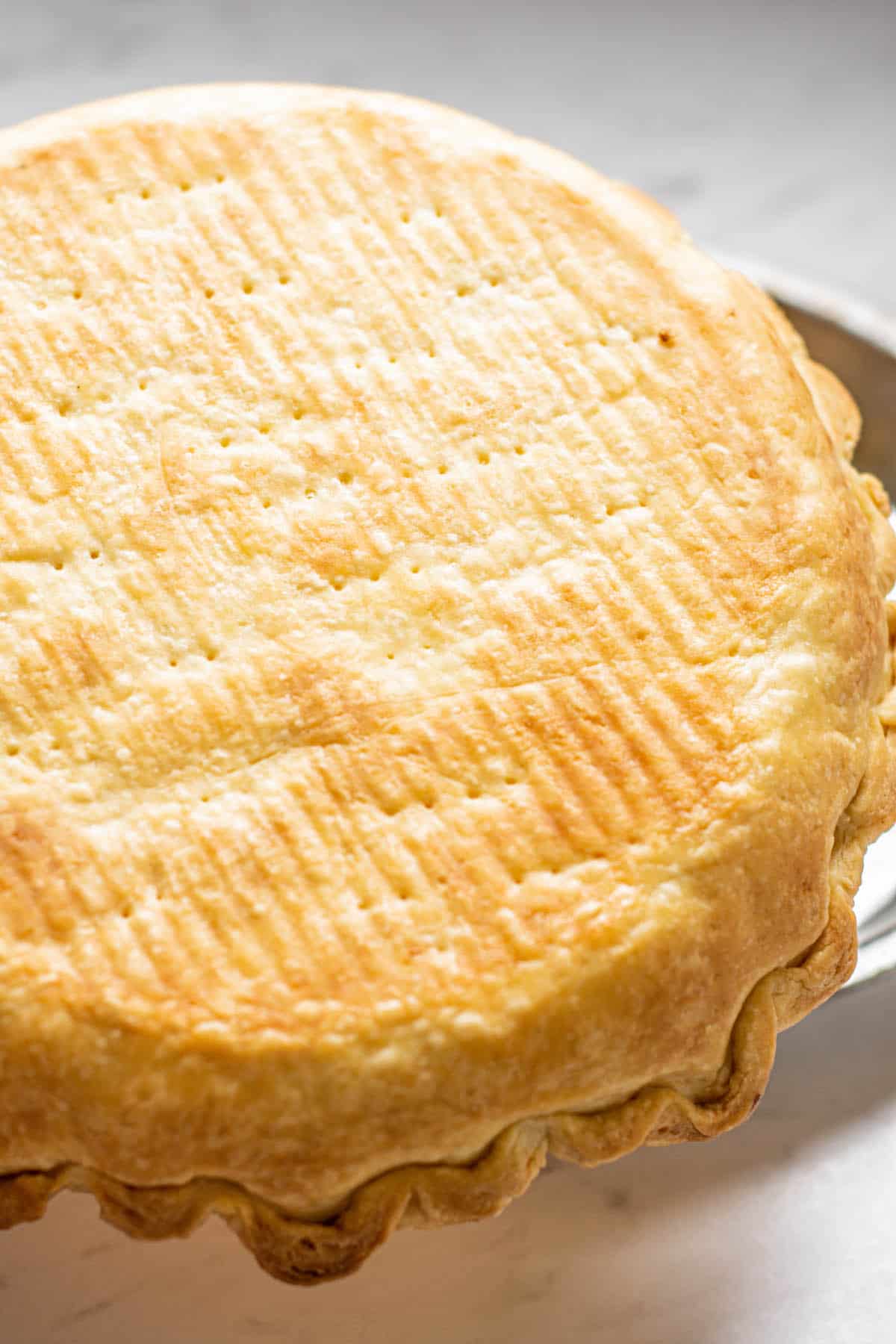
Recipe measurements
This recipe is written using grams as the main measurement. If you don’t have a scale US* cup equivalents are also included, however, using a kitchen scale to measure grams will give the best and most consistent results. *US cup sizes are smaller than metric cup sizes.
Related recipes
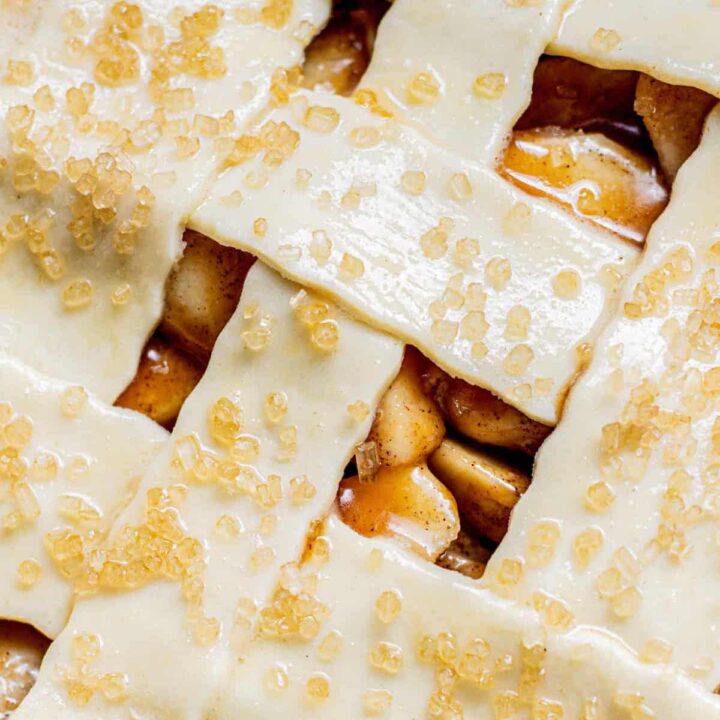
Easy Pie Crust Recipe Without a Food Processor
This easy pie crust recipe is made by hand, without a food processor. It's super flaky, light, and buttery.
makes 2 x 9-inch pie crusts
Ingredients
- 312g (2 1/2 cups) all-purpose flour or pastry flour
- 1 teaspoon sugar
- 3/4 teaspoon salt
- 225g (1 cup) unsalted butter, cold
- 1 Tablespoon lemon juice or vinegar (apple cider vinegar or white vinegar)
- 150g (10 Tablespoons) ice-cold water
Instructions
- Begin by chopping the butter into small cubes. Add the cubes to a bowl and place them in the fridge or freezer for 10 minutes to ensure it's cold.
- To a large mixing bowl add the flour, sugar, and salt and mix them together with a fork or spatula. Add the cold butter cubes to the flour.
- Use a pastry cutter to cut the butter into small pieces into the flour, or use your fingertips to rub the butter into the flour. The end result should be like coarse bread crumbs with a few pea-sized butter pieces in the mix. If the butter is melting at any point, place the bowl in the refrigerator.
- Add the lemon juice or vinegar to the ice cold water. Add it slowly to the flour mixture, a bit at a time.
- Use a spatula or your hands to combine the dough and add in as much chilled water as needed. Add any extra water in slowly, a tablespoon at a time. It should hold together easily when pressed but not be sticky. If the dough is crumbly, add a bit more water.
- If the butter has softened or the dough is warm, place it in the fridge for 30 minutes before continuing with the next step.
- On a lightly floured work surface, using a rolling pin, roll the dough into a rough 10-inch/25cm rectangle. There's no need to measure it perfectly; just lengthen it to around 10 inches.
- Fold the bottom ⅓ of the dough up to the middle, then fold the top ⅓ of the dough over top to make a pamphlet shape.
- Turn the dough a quarter turn and repeat this process once more.
- Once finished rolling, cut the dough into two and use your cupped hands to gently shape each piece into a flat disc.
- Wrap the dough discs up tightly using compostable plastic wrap, or beeswax wrap. Chill it in the fridge for at least 2 hours or up to 2 days before using it in your favorite pie recipes.
- See instructions on how to blind-bake or fully bake a pie crust in the above post.
Notes
The dough can be wrapped tightly and frozen for up to 3 months. Thaw in the fridge before rolling.
For instructions on rolling and baking, see details in the post.
Recommended Products
As an Amazon Associate and member of other affiliate programs, I earn from qualifying purchases.
Nutrition Information:
Yield: 8 Serving Size: 1Amount Per Serving: Calories: 154Total Fat: 2gSaturated Fat: 1gTrans Fat: 0gUnsaturated Fat: 1gCholesterol: 5mgSodium: 171mgCarbohydrates: 29gFiber: 1gSugar: 2gProtein: 4g



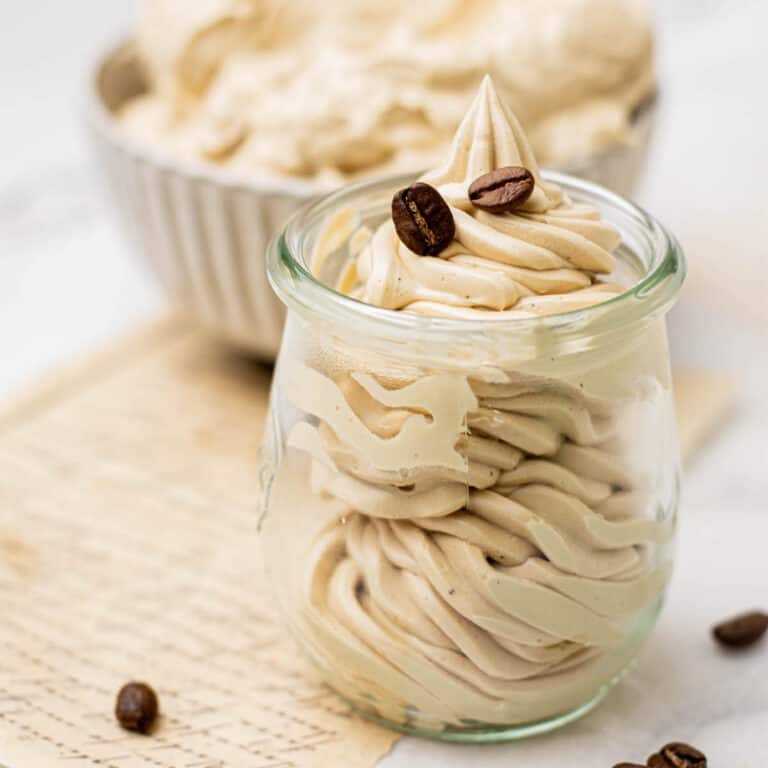
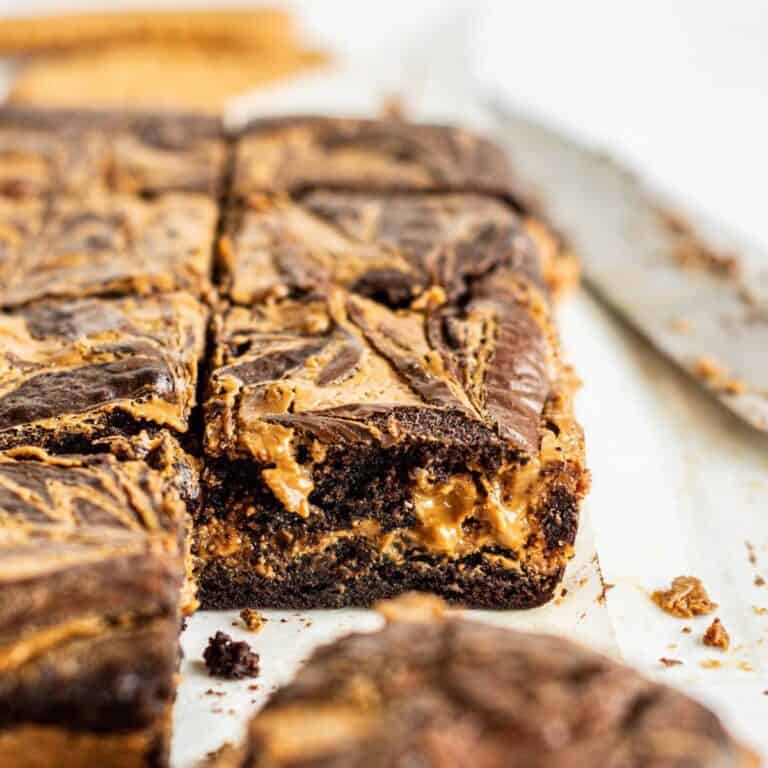


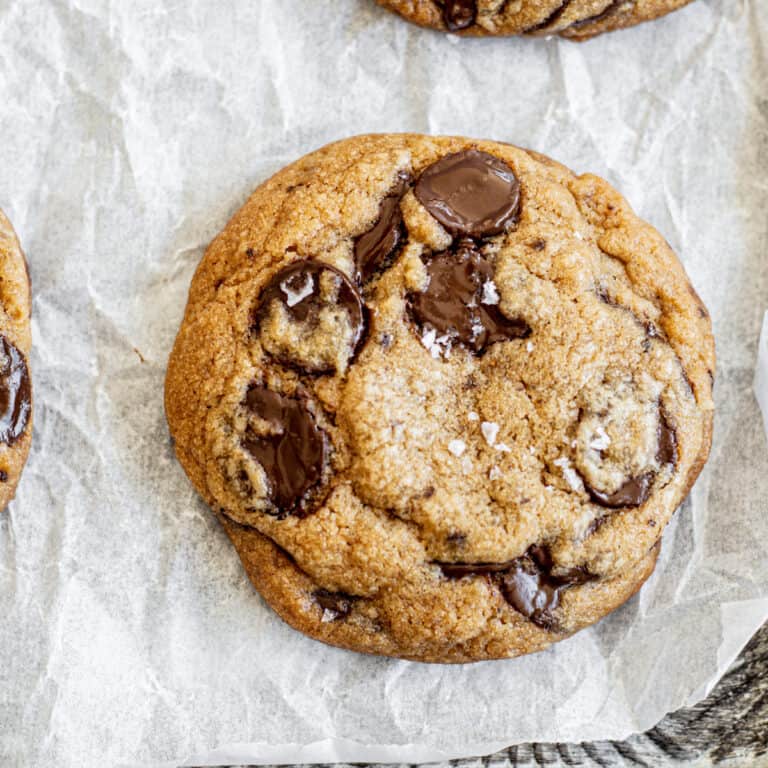

My Mom was the pie crust queen in our family but unfortunately she’s been gone more than 20 years. I’ve never learned to make a decent pie crust but your tutorial should change that! Would you clarify something? It indicates to divide the folded dough into 2 disks and chill. In the “Rolling the Crust” section I think it says after the dough is chilled to remove it from the fridge and to cut it in half. Does that mean to remove 1 dough disk and cut it in half? Or has the dough already been cut in half when the 2 disks were formed and 1 full disk should be used? So sorry I’m confused – I’m sure others weren’t! Thank you for your help and this great tutorial!
Thank you for pointing that out! It should not say cut in half since it has already been cut as you say! I will change that :). Thanks again! I hope you enjoy the recipe 🙂